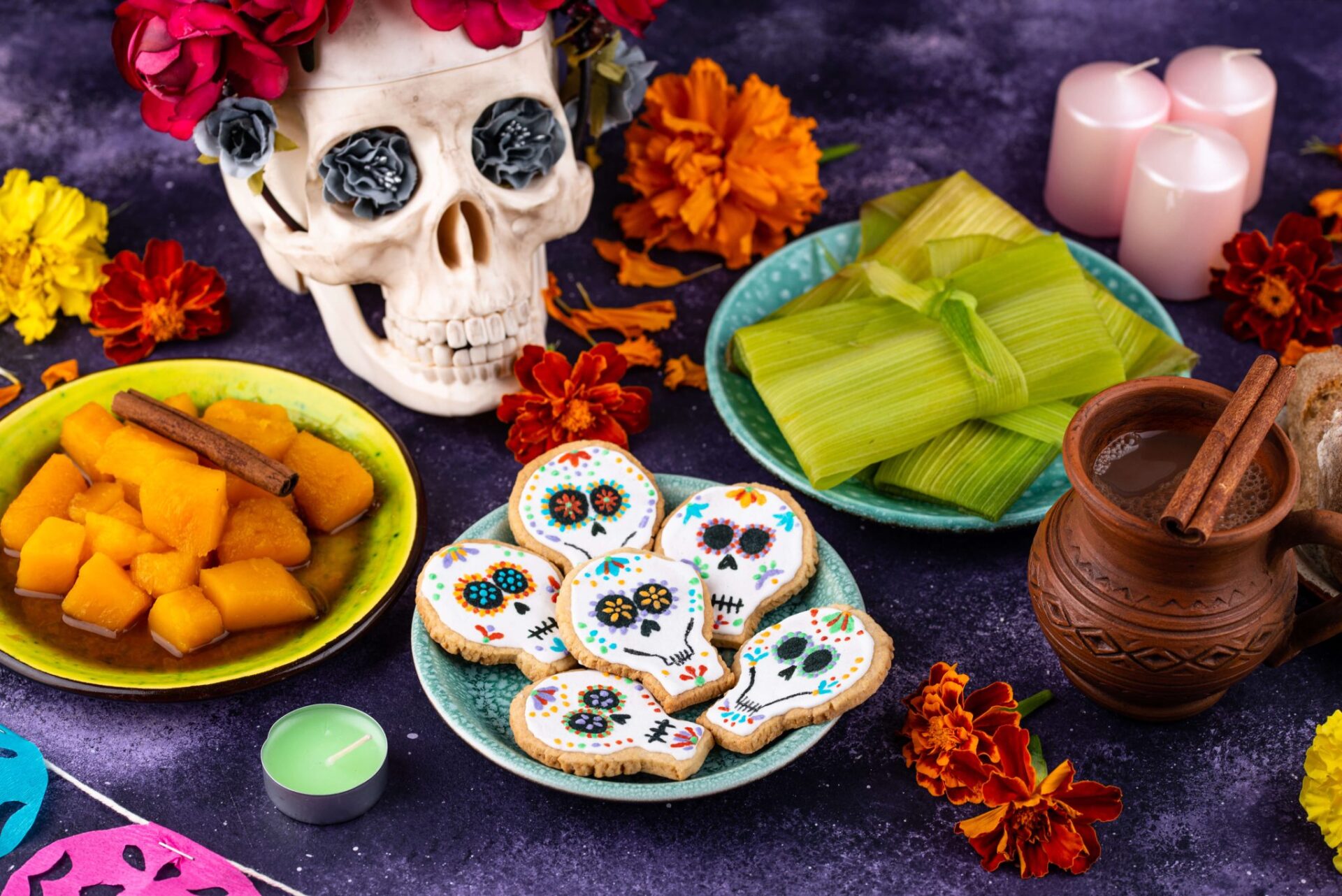Every year from October 27 to November 2, vibrant colors, music, and the scent of marigolds fill communities across Mexico and beyond. This time marks Dia de los Muertos, or the Day of the Dead—a celebration that brings families together to honor loved ones who have passed away.
In Dallas, the spirit of this tradition shines through neighborhoods like Oak Cliff and Bishop Arts, where local altars, murals, and flavors reflect deep cultural roots. During Incloodie’s Tejano Trails Tour, guests often get to witness these traditions firsthand, learning how food and family stories keep the past alive.
A Celebration of Life, Not Death
Dia de los Muertos isn’t a somber event—it’s a joyful reunion. Families believe that for one night each year, their departed loved ones return to share in the laughter, food, and memories of home. Instead of mourning, people celebrate with music, dancing, and colorful displays of remembrance.
The holiday is divided into two main days.
November 1: Día de los Angelitos (Day of the Little Angels) honors children who have passed. Their altars are decorated with toys, candies, and their favorite snacks.
November 2: Día de los Difuntos is dedicated to adults, with ofrendas filled with their favorite meals, drinks, and photos.
By noon on November 2, families gather in cemeteries to clean graves, share stories, and decorate with flowers, candles, and sugar skulls—symbolizing the cycle of life.
The Meaning Behind the Symbols
Every element of Dia de los Muertos has meaning. The bright orange marigold flower (cempasúchil), often called the “flower of the dead,” is believed to guide spirits back with its scent and color. Candles light their path home, and papel picado—delicate paper banners—represent the fragility of life.
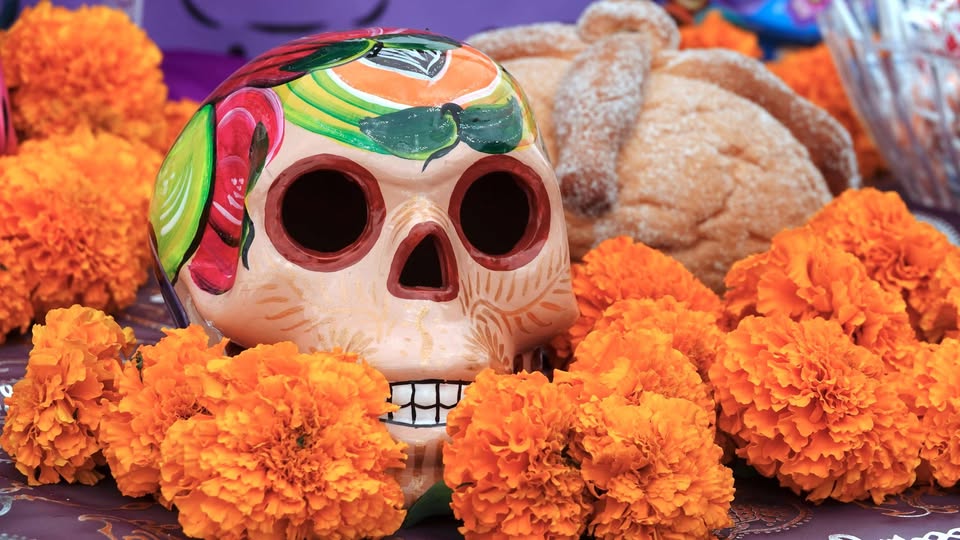
Perhaps the most recognizable icon is the calavera, or sugar skull. These smiling faces aren’t meant to be frightening. Instead, they’re a playful reminder to embrace life and remember those who came before. During Incloodie’s Tejano Trails Tour through Oak Cliff’s historic district, guests often spot murals featuring these iconic designs, sometimes alongside street vendors selling pan dulce and tamales in celebration of the season.
Traditional Foods That Tell Stories
Food plays a central role in Dia de los Muertos celebrations. It connects the living and the dead through shared flavors and memories.
Pan de Muerto (Bread of the Dead)
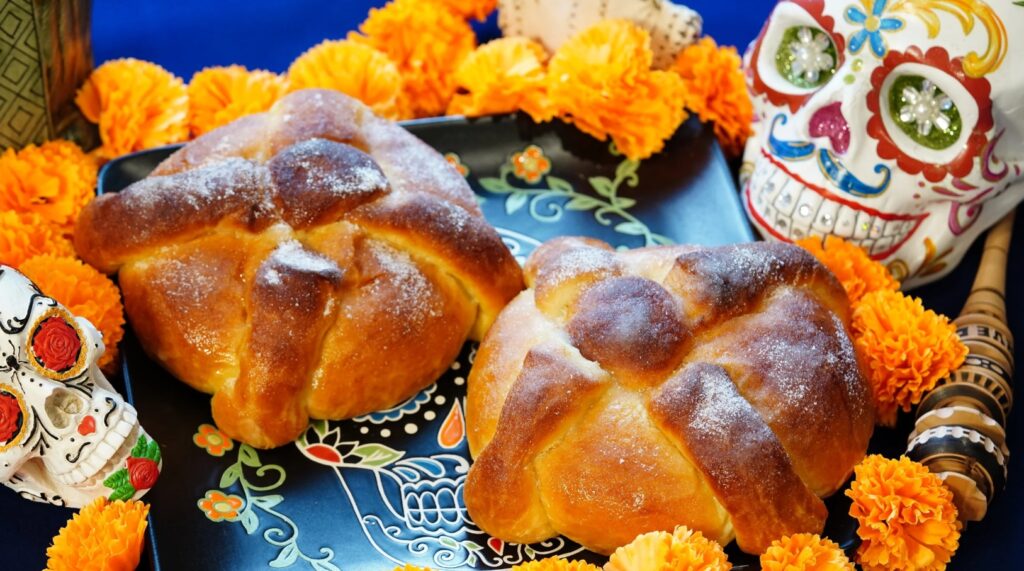
This sweet, round bread is dusted with sugar and often shaped with bone-like designs on top. It represents the circle of life and is usually served with hot chocolate or atole. Visitors can find this bread at local panaderías in Bishop Arts during late October and early November.
Tamales
A staple of Mexican gatherings, tamales are made with masa and wrapped in corn husks. Families spend the day preparing them together, filling them with pork, chicken, or beans as a symbol of unity and tradition.
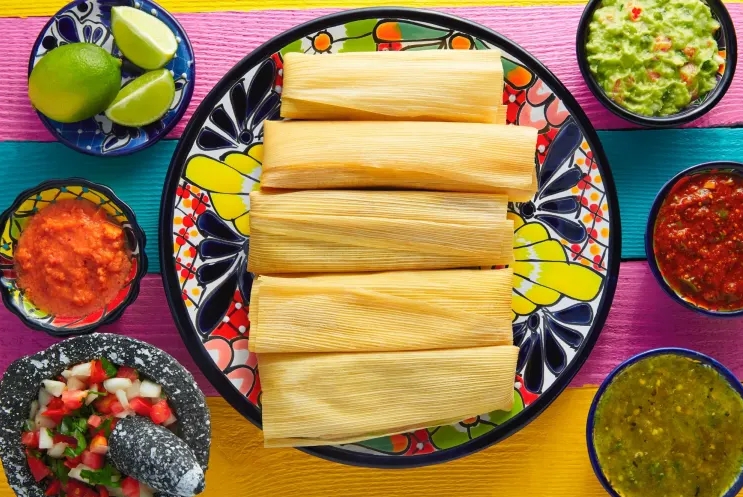
Atole and Champurrado
Warm and comforting, atole is a thick corn-based drink flavored with cinnamon and vanilla. Champurrado adds chocolate, creating a rich version perfect for cool fall evenings.
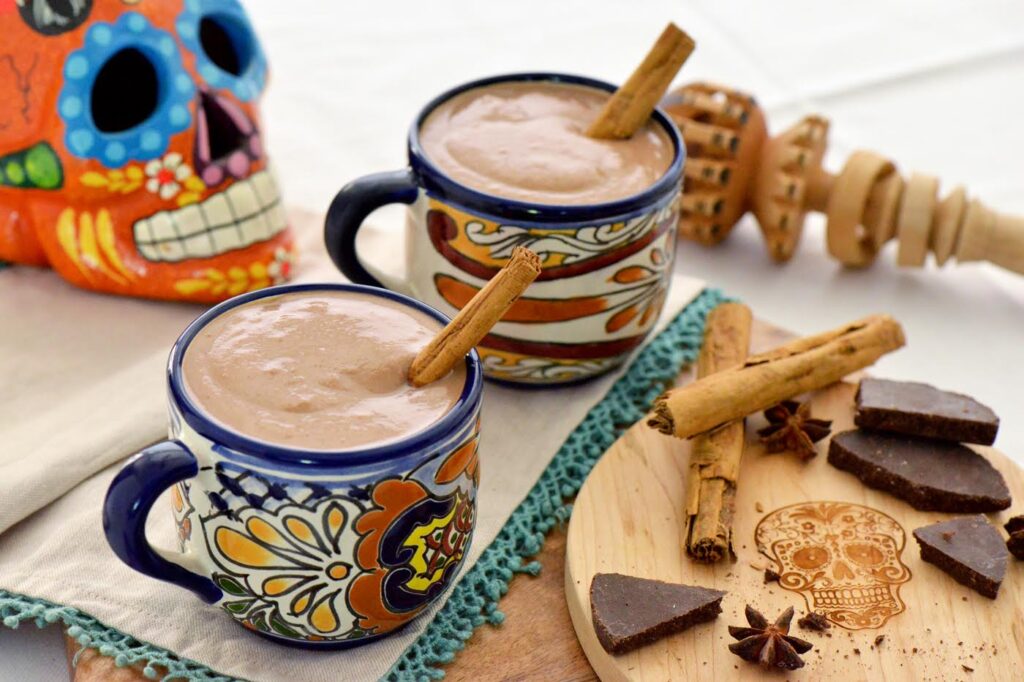
Sugar Skulls and Candies
Sugar skulls are more than sweets—they’re art. Often hand-decorated with icing and colorful foil, they feature the names of departed loved ones and are placed on the altar as offerings.
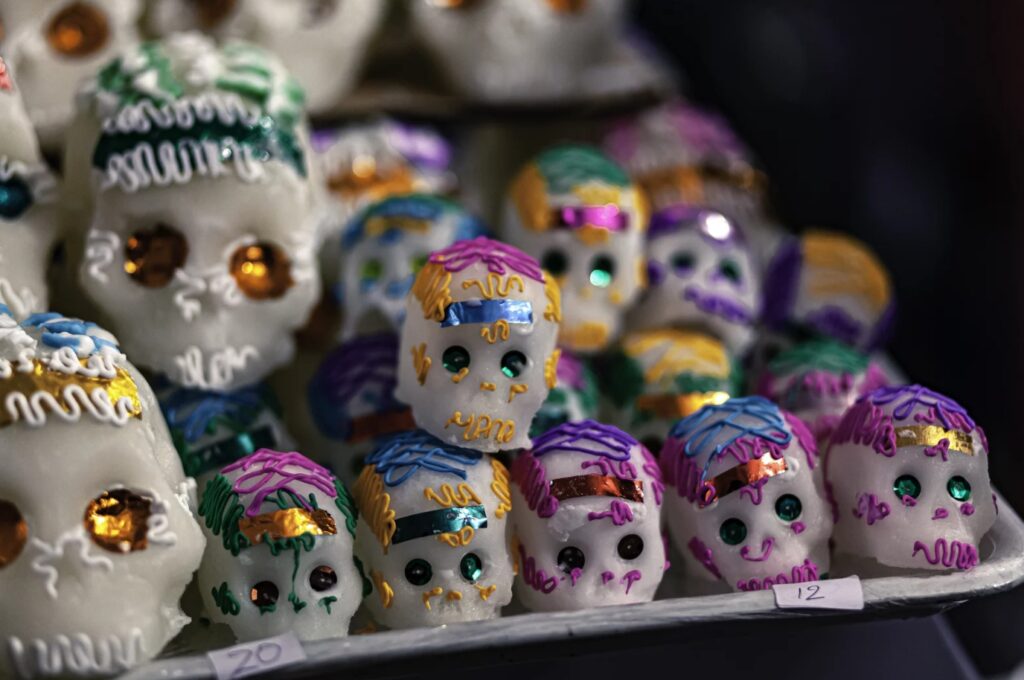
Guests joining Incloodie’s Tejano Trails Tour may even visit local bakeries that prepare these traditional treats, offering a taste of how culinary traditions keep culture alive in Dallas today.
How to Create Your Own Ofrenda (Altar)
Building an ofrenda is a beautiful way to participate in Dia de los Muertos, even if you’re new to the tradition. It’s not about perfection—it’s about intention and love. Here’s a simple guide to get started at home:
1. Choose a space.
Pick a small table or shelf in a quiet area. Cover it with a colorful cloth—bright orange, pink, or red are common choices.
2. Add photos and mementos.
Place pictures of loved ones who have passed and personal items that remind you of them. This could be a favorite book, jewelry, or a piece of art.
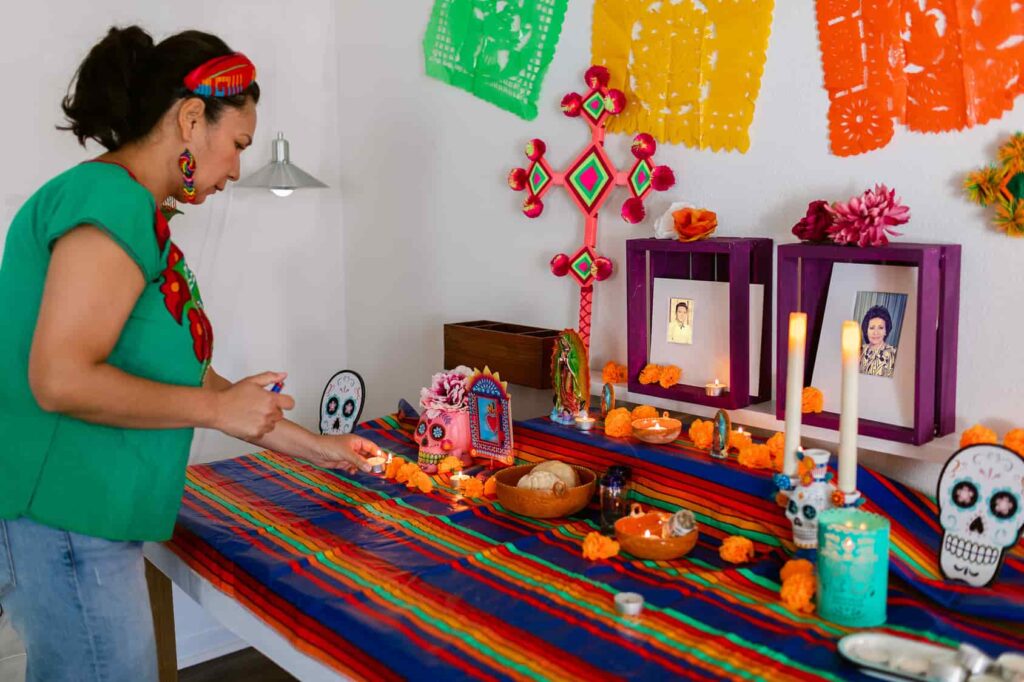
3. Include offerings.
Add their favorite foods, drinks, or snacks. You can also include small portions of traditional items like pan de muerto, fruit, or coffee.
4. Decorate with marigolds.
Fresh or paper marigolds bring color and fragrance to your altar. They symbolize the path home for the spirits.
5. Light candles.
Candles represent remembrance and help guide souls back. Each one can symbolize a specific person you’re honoring.
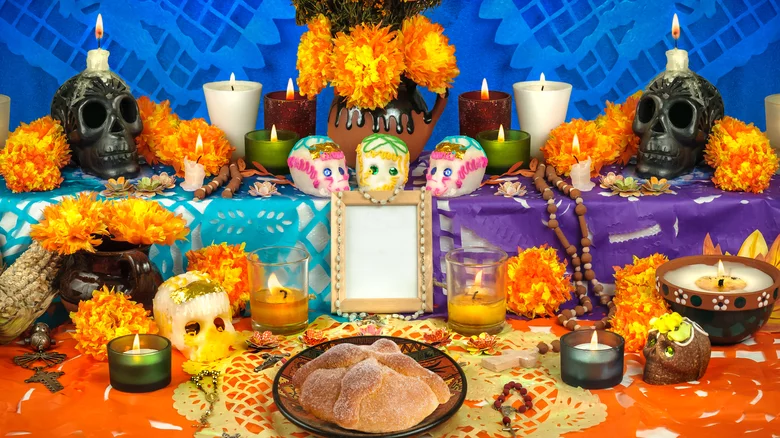
6. Add symbolic touches.
Papel picado for air, a glass of water for thirst, salt for purification, and food for nourishment—these balance the four elements.
As the altar takes shape, take time to reflect on each person being honored. The ofrenda becomes not just a display, but a space for gratitude and memory.
Experiencing Dia de los Muertos in Dallas
In neighborhoods like Oak Cliff, the celebration takes on a life of its own. During the last week of October, the streets come alive with community altars, face painting, and parades featuring La Catrina—the elegant skeletal lady who has become a symbol of the holiday’s humor and grace.
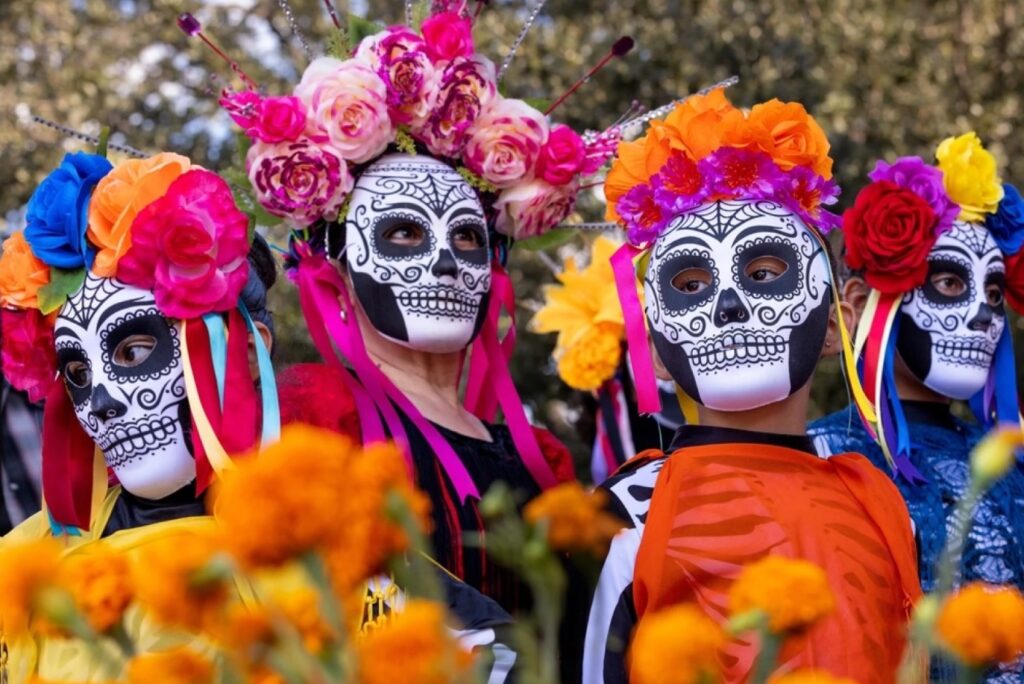
Through Incloodie’s Bishop Arts and Oak Cliff Tejano Trails Tour, guests often get the chance to see these traditions up close. Stops may include local cafes serving seasonal pan dulce, murals honoring Dallas’s Mexican heritage, and historical landmarks that showcase how the city’s cultural identity was built. It’s a celebration that connects food, art, and storytelling in one unforgettable experience.
Keeping the Spirit Alive
Dia de los Muertos traditions remind us that remembering loved ones doesn’t have to be a sad experience. Instead, it’s a celebration of connection—the kind that transcends time and place. Whether you visit a local altar in Dallas or create one at home, the heart of the holiday remains the same: love never truly leaves.
To see this vibrant celebration in person, Incloodie invites guests to join the Bishop Arts and Oak Cliff Tejano Trails Tour. It’s an immersive way to explore Dallas’s Hispanic heritage through food, culture, and the stories that make this city’s community so special.
Book your spot today and discover how every flavor tells a story.

